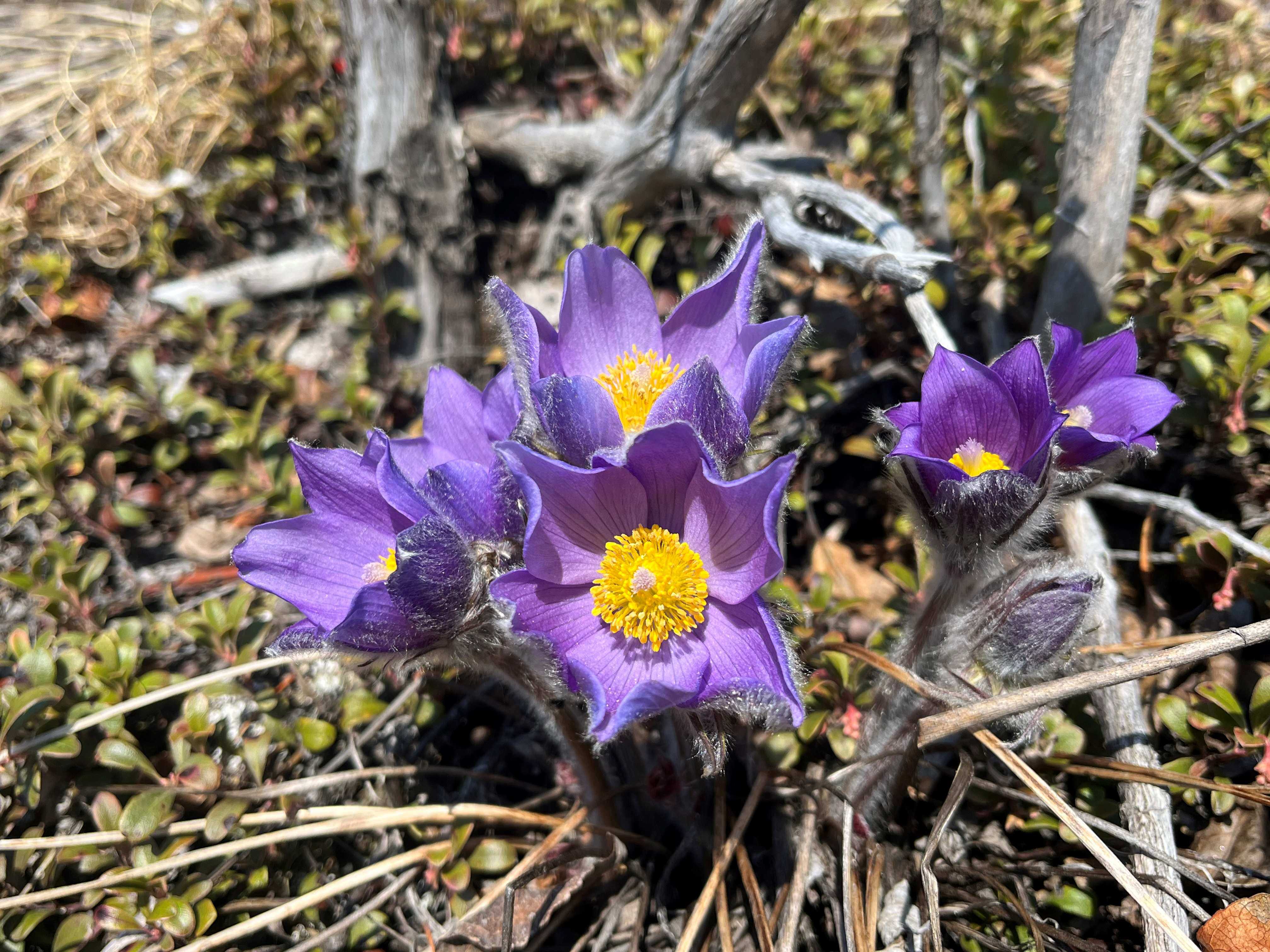
Purple pasque flowers. Erica Watson

Purple pasque flowers. Erica Watson
Photographs and words by Erica Watson
Winter 2023-24, FORUM Magazine
FOR YEARS, I’ve documented the first pasque flower blooms to appear on the hillsides near home on the boundary of Denali National Park. My approach is not a scientific one; I look for flowers where my mood and the snowmelt take me, and my only record-keeping is a social media almanac with a small but loyal following.
I am not one to wish away the winter or to rush the spring. But these flowers, purple beacons bobbing in the wind while the world around them remains a shoulder season monochrome, offer a promise of the season to come, sprouting from the artifacts of past years’ growth. I’m drawn to their continuity even as the seasons bring new uncertainties each year, and to their flamboyance in a landscape that doesn’t seem quite ready for them. I’ve watched small children squeeze a flower in their small fist or a new blossom close and droop under late season snow, and the next day the petals appear bright and unscathed. Flowers carry no shortage of metaphors, but I think they are most powerful as simply themselves: blooming where conditions, however unlikely they may seem, allow, then gone.
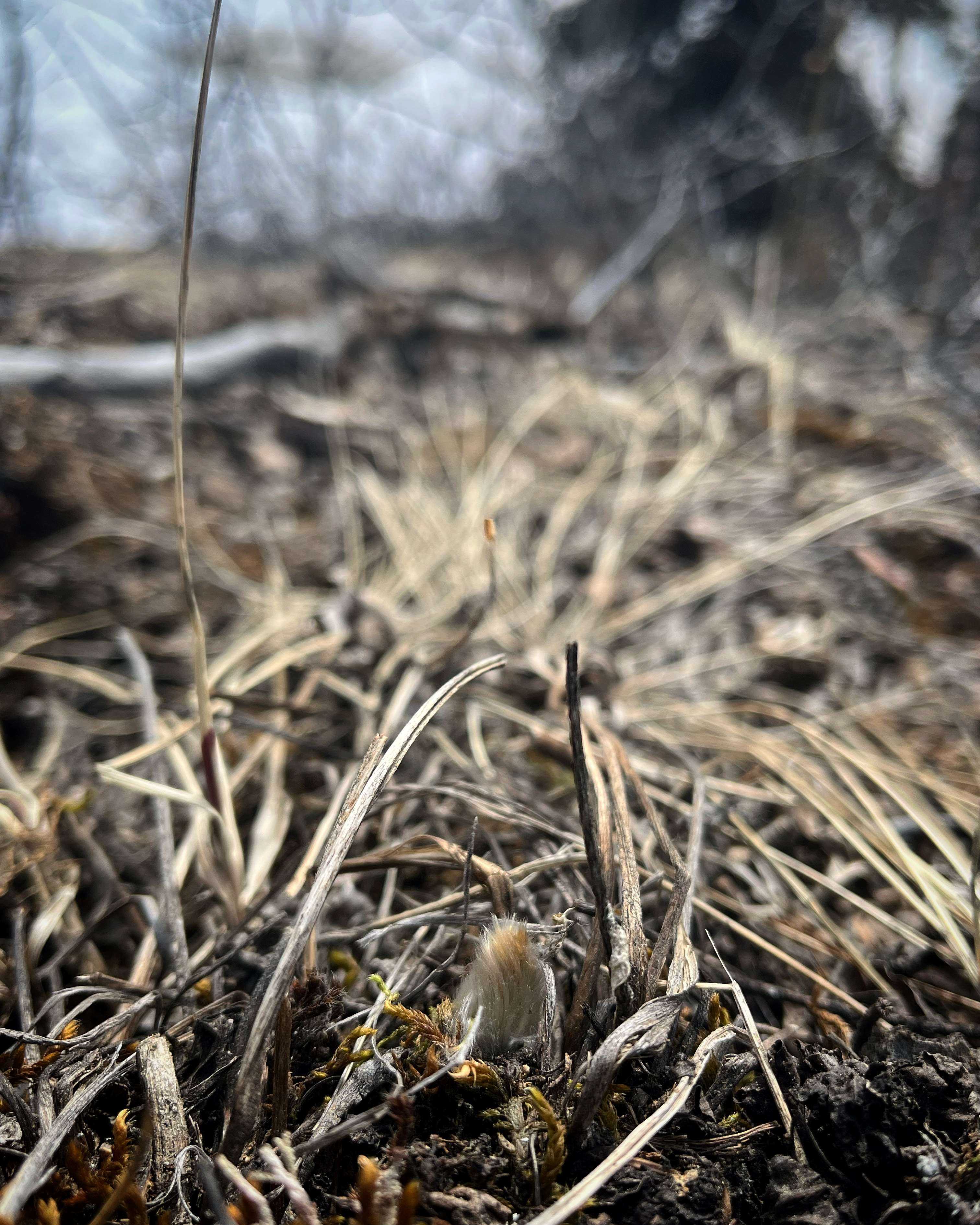
Last year’s browned and damp leaves matted to the wet ground. Erica Watson
I TRY to find the flowers earlier each spring, long before they are flowers. As soon as bare ground appears, I find last year’s browned and damp leaves matted to the wet ground. Sometimes daytime highs still hover below freezing, but most years the buds appear around mid-April. I’m careful to replace any vegetation I moved to see them; they’re not yet ready for the world.
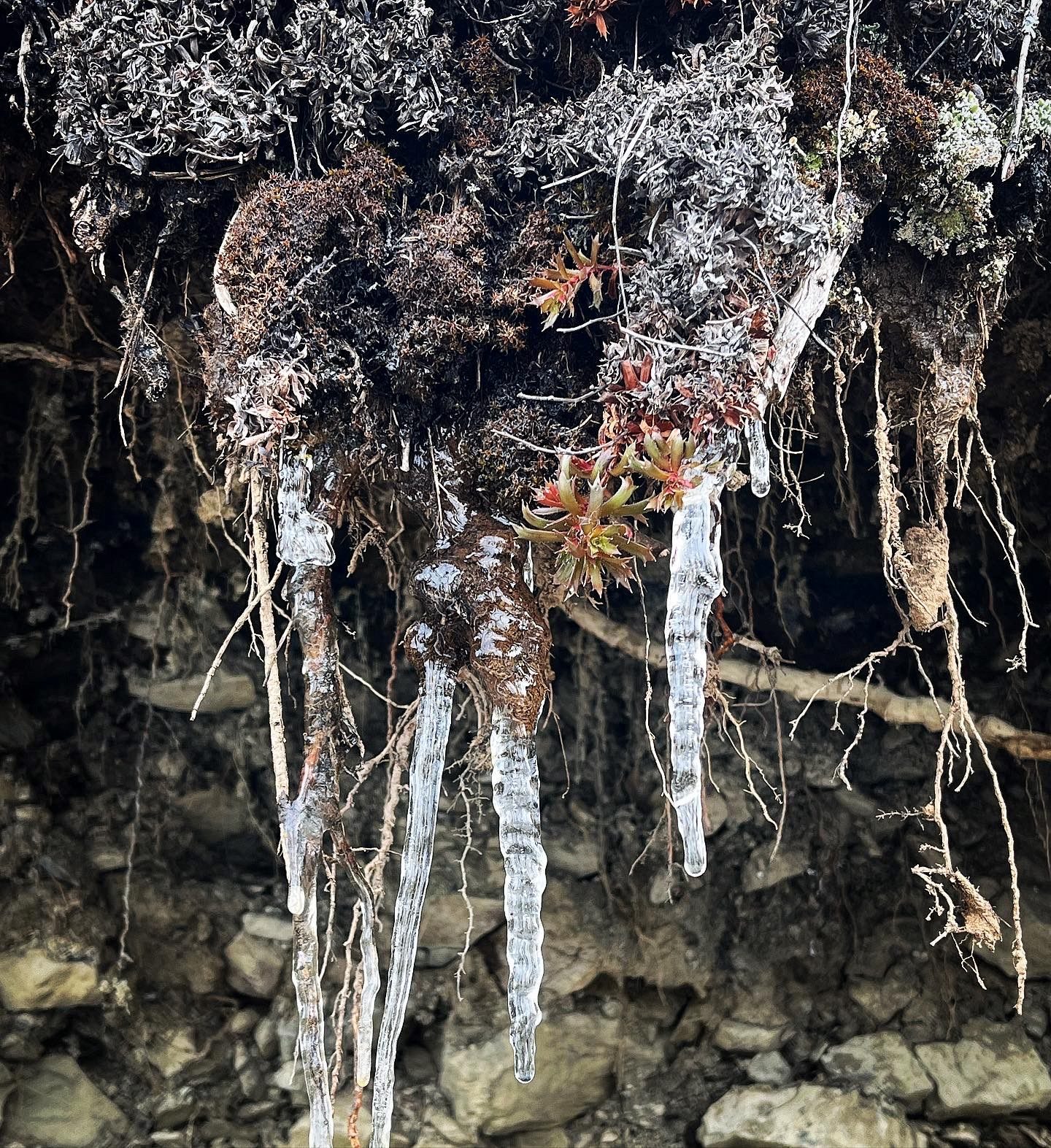
Pasque flower amidst ice. Erica Watson
PASQUE FLOWERS thrive in well-drained, south-facing slopes. As the climate warms, slopes undercut by roads or other disturbance fall away. The earliest flowers I find reliably grow on this hollowed-out hillside.
Flowers carry no shortage of metaphors, but I think they are most powerful as simply themselves: blooming where conditions, however unlikely they may seem, allow, then gone.
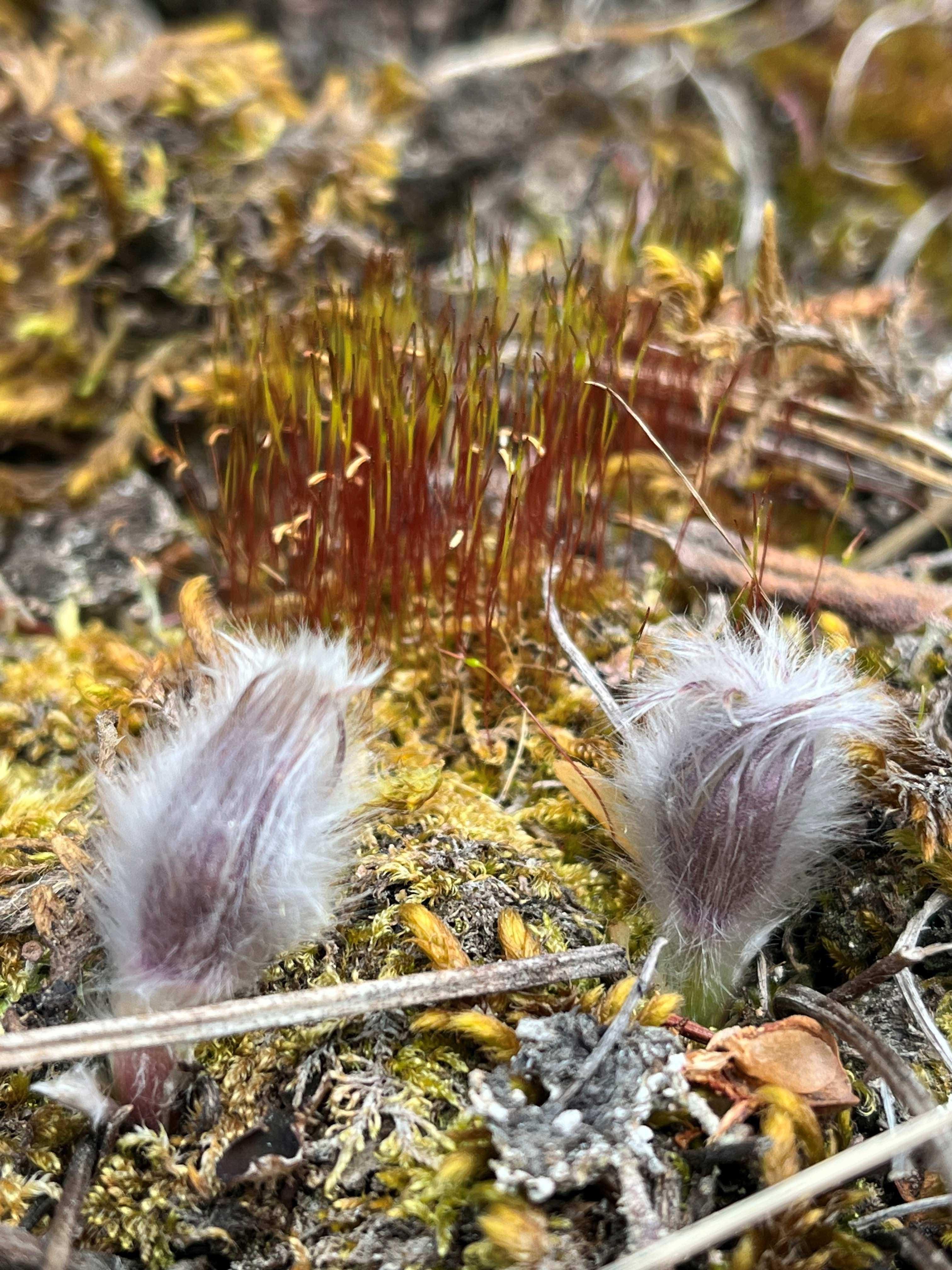
The first hints of purple buds. Erica Watson
ANTICIPATION BUILDS with the first hints of purple.
A FAMILIAR SLOPE just off the Parks Highway was recently cleared and graded as part of an extensive road construction project. I wonder if the flowers will grow here again. I miss these bursts of color on their unremarkable hillside.
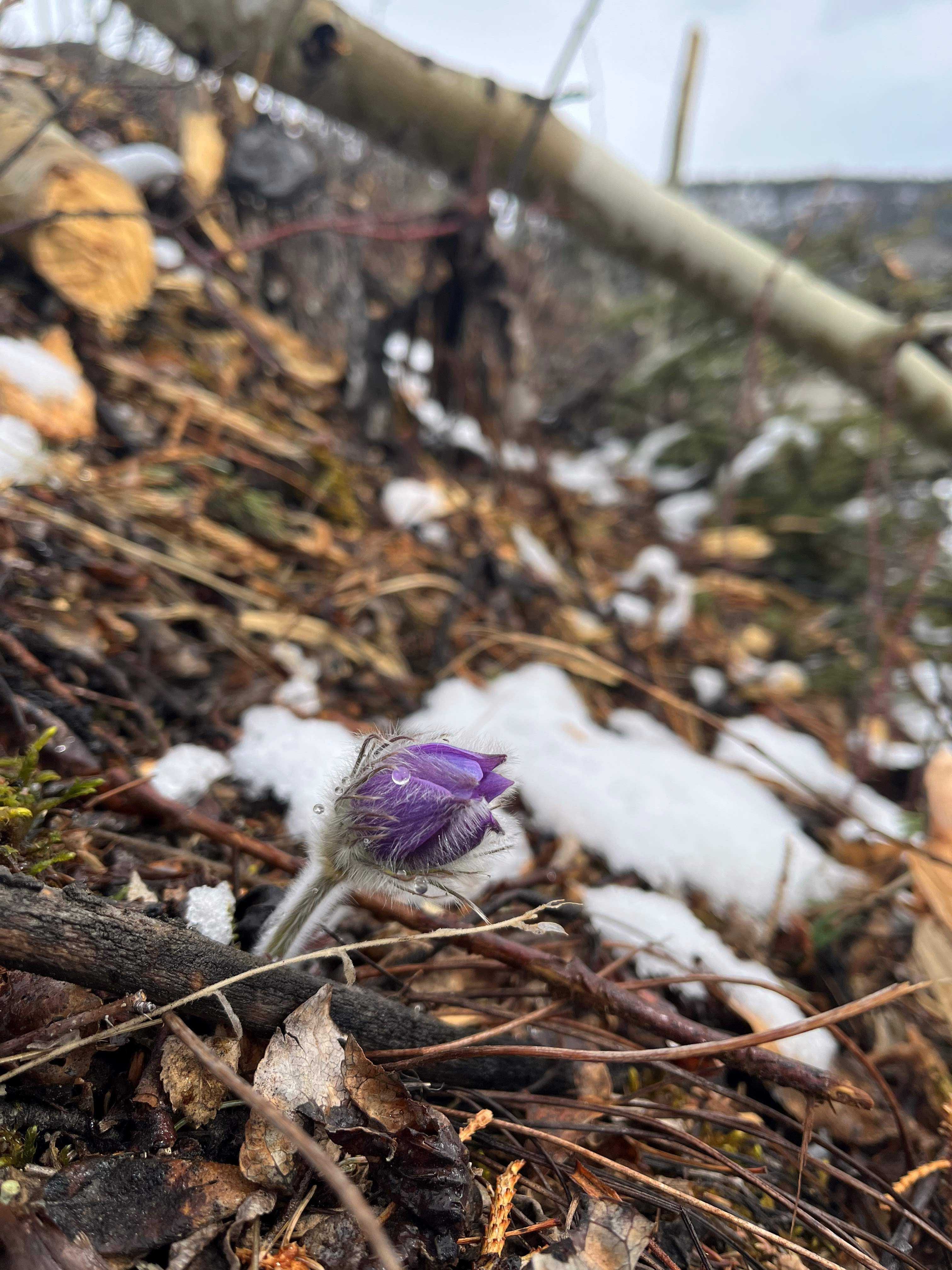
A purple bud on a slope. Erica Watson
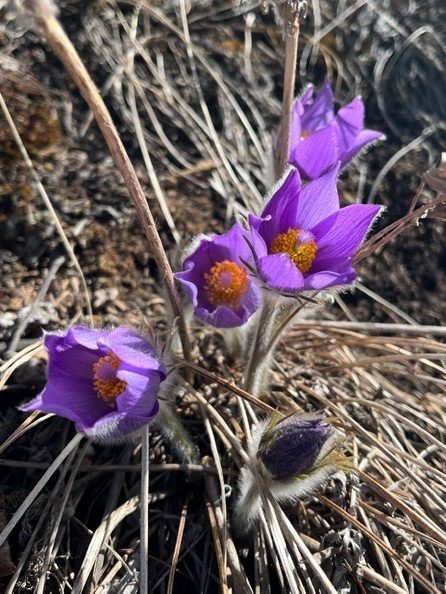
A group of purple paque flowers. Erica Watson
IN TWO IN THE FAR NORTH, conservation leader Mardie Murie wrote of annual “crocus picnics” in the Fairbanks springs of her youth over a century ago. The announcement of pasque flowers, colloquially known then as crocuses, meant everyone took a day off from school to picnic above the still frozen Tanana River among the flowers. “The crocus picnic was always around the 29th of April,” she wrote. The earliest I’ve seen pasques in full bloom was April 14, 2019, a remarkably warm spring. A friend in Fairbanks reported a sighting the same day. In the lingering cold of Spring 2023, they didn’t bloom until Mother’s Day, May 14.
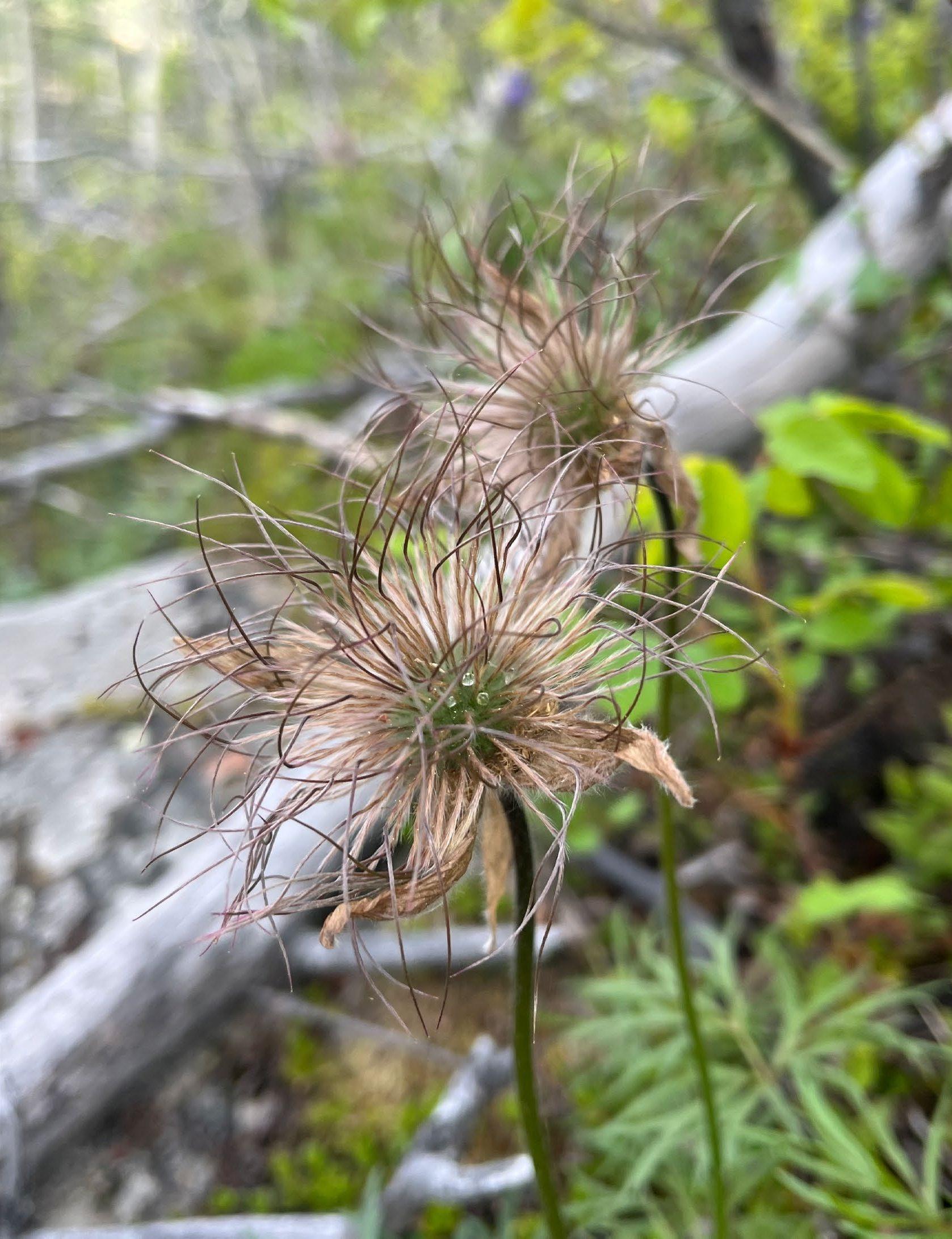
Pasque flowers gone to seed, surrounded by green forest. Erica Watson
BY THE TIME pasque flowers go to seed, the forest has greened up around them. They might be surrounded by lupine and bluebells, and their tufted seed heads are easy to miss, remnants from a short season already passed. ■
Erica Watson lives and writes on the boundary of Denali National Park with her partner and dog. Learn more at ericarobinwatson.com.
The Alaska Humanities Forum is a non-profit, non-partisan organization that designs and facilitates experiences to bridge distance and difference – programming that shares and preserves the stories of people and places across our vast state, and explores what it means to be Alaskan.
April 16, 2025 • Kameron Perez-Verdia
March 5, 2025 • Polly Carr
February 25, 2025 • Amanda Dale